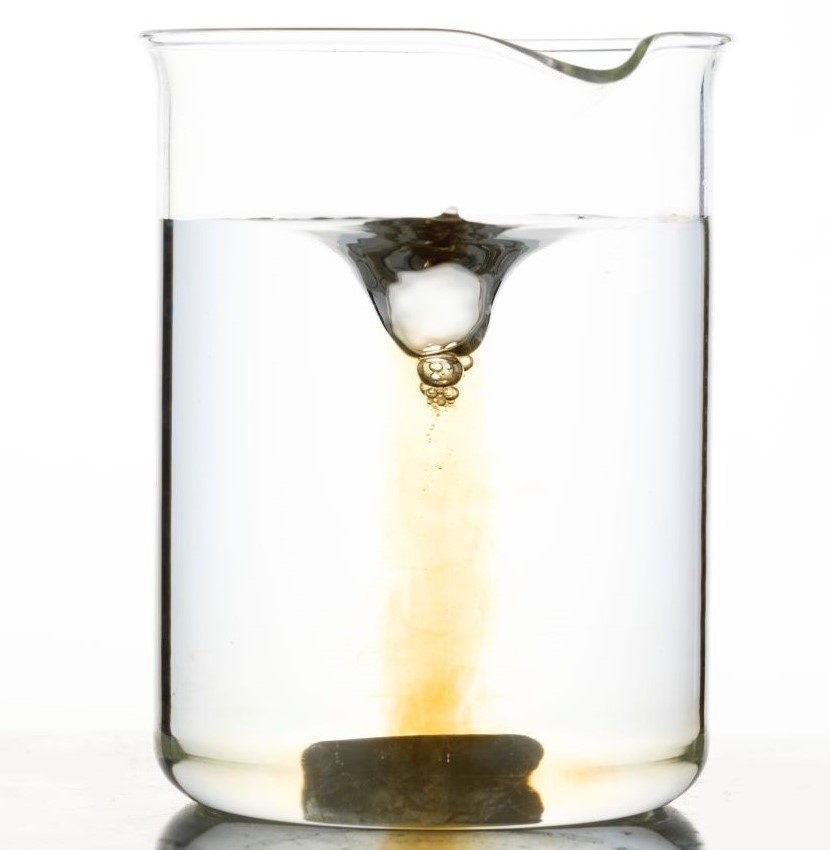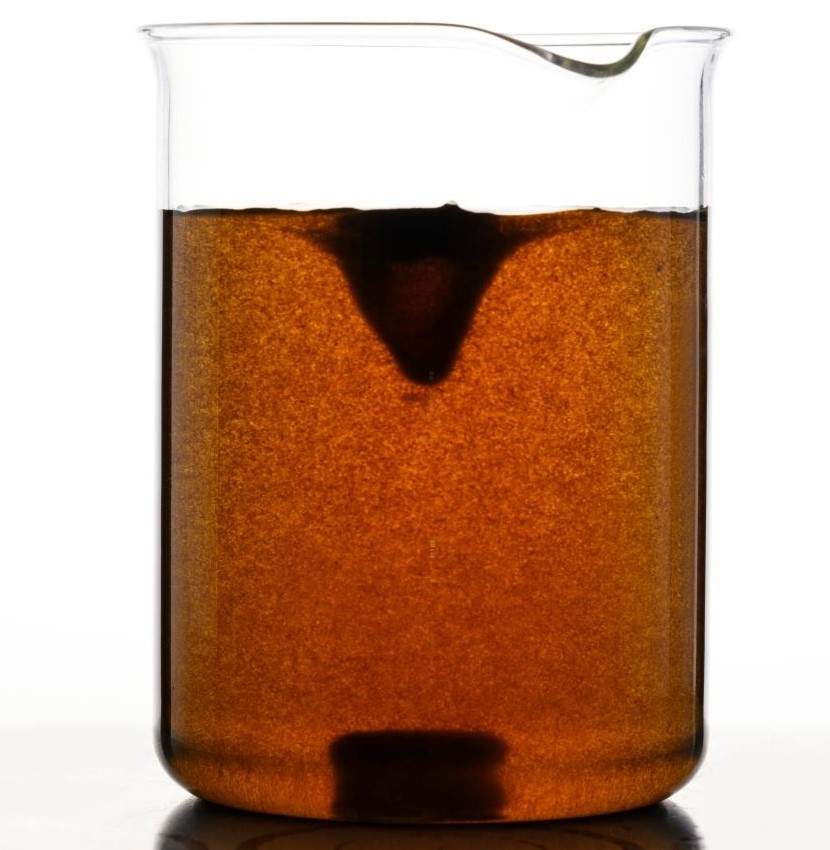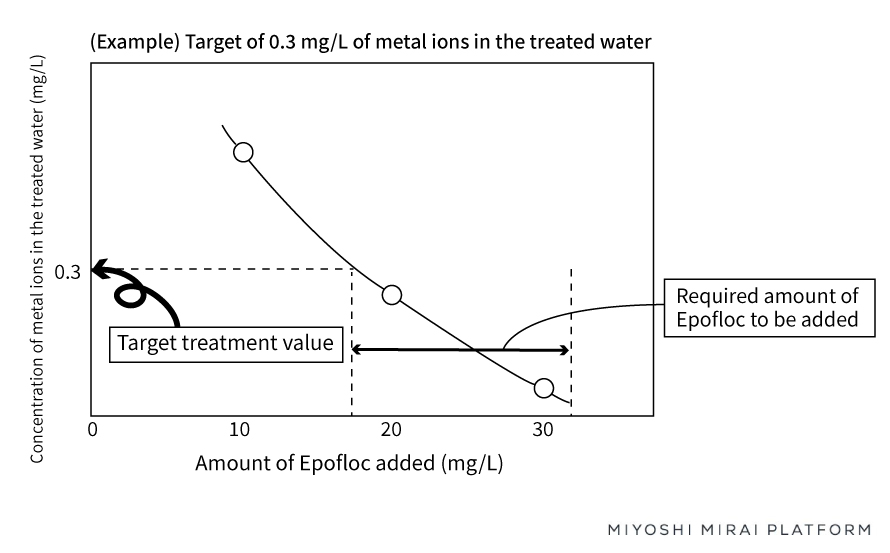When the use of Epofloc in a heavy-metal treatment plan is investigated, treatment testing should be conducted using actual wastewater. As long as you have a beaker, an agitator, and a stirring bar, you can perform treatment testing on your own and easily check the effectiveness of Epofloc.
The basic steps for treatment are as outlined in steps (1) through (6) below.
The conditions, such as the type of auxiliary agent and amount to be added, are set based on the facility in question.
◆Testing method
(1) Setting of the amount of Epofloc to be added
(2) Addition of Epofloc
(3) Addition of an auxiliary agent
(4) The pH adjustment
(5) Addition of a polymer coagulant flocculant
(6) Standing of the mixture
◆Testing is performed to determine the amount of Epofloc to be added.
◆Points
◆Testing method

(1) Setting of the amount of Epofloc to be added
The amount of Epofloc to be added is set.
*Care should be exercised because an incorrect amount could render the addition of Epofloc ineffective.

(2) Addition of Epofloc
The mixture is agitated rapidly (for approximately 10 to 20 min).
Large flocs are generated in approximately 5 to 10 min.

(3) Addition of an auxiliary agent
An auxiliary agent is added, and the mixture is agitated rapidly (for approximately 10 to 20 min).
*The ratio of Epofloc to the auxiliary agent is normally between 1:3 and 1:10.
*Auxiliary agent: Examples include a ferric chloride solution, poly-iron, aluminum sulfate, and PAC.

(4) The pH adjustment
The pH is adjusted to the treatment level (between 5 and 9).

(5) Addition of a polymer coagulant flocculant
A polymer flocculant is added. The mixture is agitated slowly (for approximately 1–5 min) before allowing to stand.

(6) Standing of the mixture
The mixture is agitated slowly and allowed to stand before the treated water is separated from the sludge that accumulates at the bottom of the beaker.
◆Testing is performed to determine the amount of Epofloc to be added.
Actual wastewater is used to determine the optimal amount of Epofloc to be added.
1. The amount of Epofloc to be added (such as 10, 20, or 30 mg/L) is set.
2. A beaker test is conducted according to the testing method described above.
3. The concentration of heavy-metal ions in the supernatant resulting from step (6) of the treatment process (letting it stand) (or after filtration) is measured.
4. The relationship between the amount of Epofloc added and the concentration of heavy-metal ions is graphed.

5. The amount added, which should be no more than the target treatment value, is the required amount to be added
(When the target treatment value is not reached, the amount of Epofloc added is increased.)
◆Points
- The amount of Epofloc added varies according to the concentration of heavy-metal ions in the wastewater.
- Although a ferric chloride solution was used as the auxiliary agent in this test, you can also use poly-iron, aluminum sulfate, or PAC. In addition, you should consider progressively adding 3–10 times the amount of Epofloc that is added, such as adding 30, 50, or 200 mg/L of Epofloc.
- Although the optimal treatment pH level for Epofloc is 7 or 8, it is possible that a better outcome can be achieved with a pH level of 5, which is in the acidic range, or a pH level of 9 or 10, which is in the alkaline range. The level should be investigated accordingly.
- Where the pH level of raw water is less than 4, the pH level should be adjusted to raise it to 4 or higher before adding Epofloc.
If you have difficulties determining the amount of Epofloc to be added or the method of treatment to be implemented, feel free to inquire with us.
In addition, we provide one-stop solutions to the needs of our clients by offering — among other options — Eporous, a chelating resin for wastewater treatment that selectively absorbs heavy metals, and Eporva, a liquid chelating agent for the treatment of fly ash that works by immobilizing harmful heavy metals contained in fly ash generated at garbage incineration plants and other waste incineration facilities.